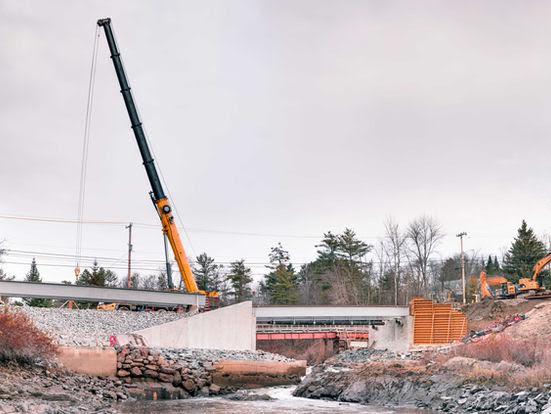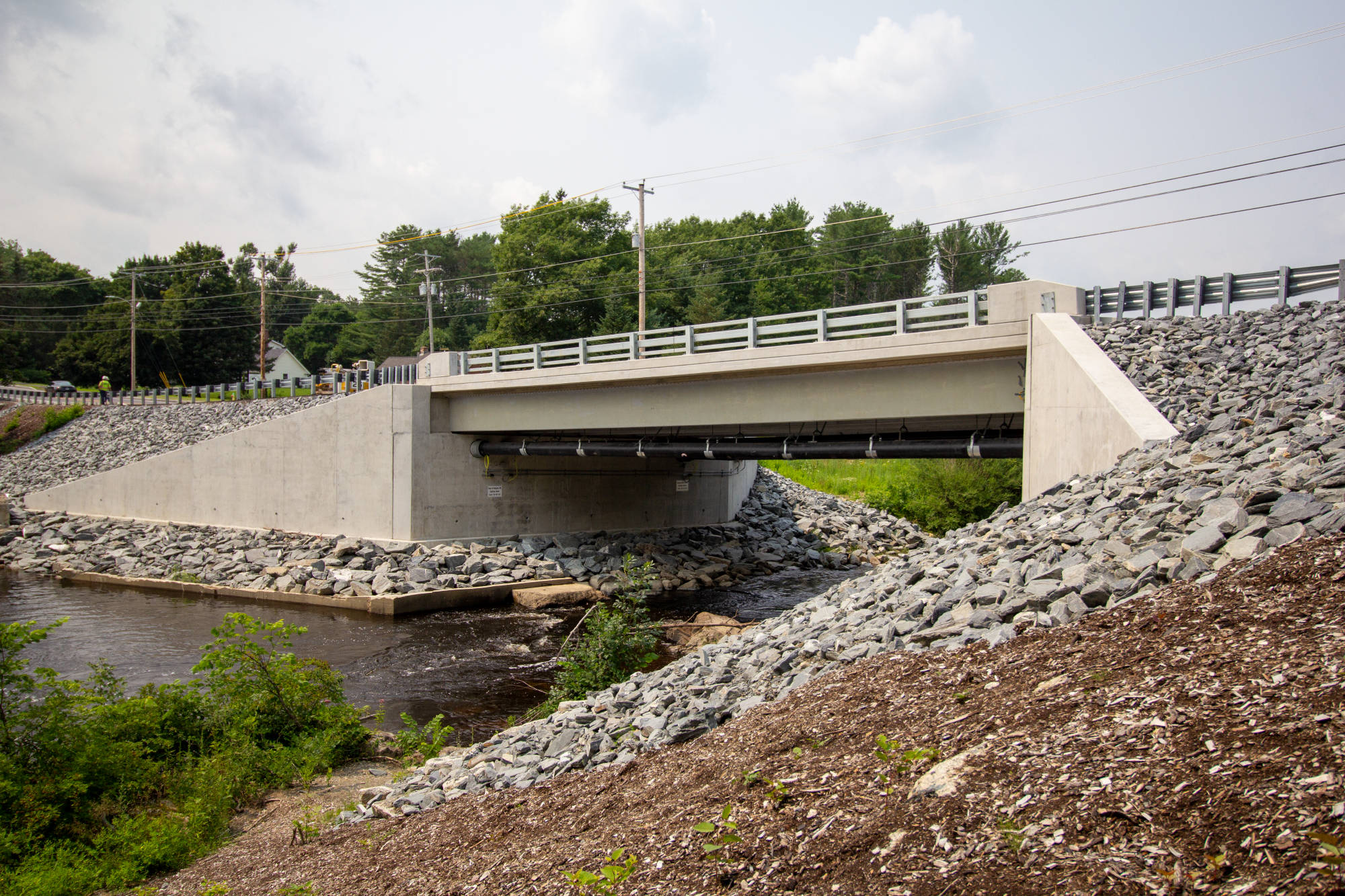Our Insights

Sustainable
In an era when sustainability and climate change are top of mind, the use of composites in infrastructure is at an inflection point. The implications and promise of composite infrastructure for bridge building will continue to gain momentum and increasingly be considered in 2022.
As state and national leaders become increasingly concerned with the condition of bridges and increasing their safety and useful life, there has also been an increasing focus on the sustainability of this critical infrastructure. At Basalt International, we see the fundamental change in bridge design and the materials used going into the future.
The fiber reinforced polymers in Basalt International's composite bridges provide them with fast installation, a long service life, minimal maintenance along the way. FRP also requires significantly less energy to manufacture and construct than traditional materials when considering processing and electricity use. The ability to recycle FRP is also a consideration but FRP's minimal environmental footprint qualifies it for the sustainable category.
The Basalt International Beam was created to provide an affordable and long-term solution to traditional steel and concrete medium span deck bridges. Our Beam is made of FRP tub girders and supported on standard foundations with either a precast concrete panel deck or a cast in place concrete bridge deck. The system is 50% lighter than steel and 75% lighter than concrete girders. This reduction in weight allows for a decrease in large equipment on the construction site and reduces transportation costs.
We know that our bridges will continue to grain traction and adoption in the market, and the sustainability story must be told. 2022 will bring sustainability to the top of every state's "must have" list. Basalt is poised to offer meaningful, sustainable advantages for bridge construction.

Imagine Act 21
The IMAGINE Act (Innovative Materials for America's Growth and Infrastructure Newly Expanded) was recently reintroduced in the US Senate. First introduced in 2019, The IMAGINE Act encourages the research into and deployment of innovative, advanced construction materials - including composites - in transportation and water infrastructure projects, across the country. This potential investment in alternative building techniques and materials is a promising step toward helping extend the life of critical infrastructure.
Recently, the Biden Administration stated that 1 in 3 bridges in the US are in need of repair or replacement, a chilling statistic that must be reversed. Maine's Senator Susan Collins along with Rhode Island's Sheldon Whitehouse are leading the reintroduction of the IMAGINE Act legislation to support federal investment in bridge and water infrastructure projects that use innovative materials, like the composite materials we use in our bridge construction projects.
Here in Maine we have a vested interest. Senator Collins said:
"Engineers in Maine and across the country are developing exciting new ways to improve our infrastructure by using innovative, resilient, and cost-effective materials and techniques, including those found in the forest products industry. The University of Maine's Advanced Structures and Composites Center is at the forefront of efforts to use 3D printing, cellulose, and other cutting-edge materials and techniques to transform every sector of our economy, from manufacturing to our transportation network. The invaluable work being done by the recently-established Transportation Infrastructure Durability Center, a consortium of universities led by UMaine, would also benefit from the investments included in the bill. The IMAGINE Act will help foster this important research and translate it into practice."
The senators are also aiming to create a task force to review the standards and practices used to assess the federal government's approval of materials for infrastructure projects, create a grant program for the use of innovative materials and increase federal investment in bridge and water infrastructure projects that utilize innovative materials. We'll be watching closely for the outcome in this legislative session. You can read more about the legislation here: https://www.collins.senate.gov/newsroom/collins-whitehouse-introduce-imagine-act-spur-use-innovative-materials-rebuilding-american
https://www.whitehouse.senate.gov/news/release/-with-infrastructure-bill-on-the-horizon-whitehouse-and-collins-introduce-imagine-act-to-spur-use-of-innovative-materials-in-rebuilding-american-public-works

Grist Mill Bridge Featured in ENR
In this article Johanna Knapschaefer, from ENR, highlighted the Grist Mill Bridge project in Hampden, Maine. She talks about the entire scope of the project, along with the advantages of FRP, and the University of Maine's research and testing. Johanna also included quotes from MaineDOT's Wayne Frankhauser, Basalt International's Ken Sweeny, TBuck's Brian Emmons, and the University of Maine's Habib Dagher and Bill Davids. To view the full article click below
Read Story
WSDOT tries a 'bridge-in-a-backpack' in Duvall...
Basalt International's most recent composite arch bridge, in Duvall, WA has been featured in The Seattle Times by Mike Lindblom. The article details the promising abilities the composite arch bridge system can bring to the fish passage rehabilitation program in Washington. The program aims to fix an estimated 1,526 road crossings in the state for better usage from wildlife, specifically the steelhead, soho and other fish that use streams and culverts for spawning. The article features commentary from WSDOT bridge engineer Mark Gaines, environmental scientist for the Tulalip Tribes Colin Wahl, and marketer for Basalt International Colby Kohn. The article also features pictures and drone footage (Seen Here /Ken Lambert / The Seattle Times) from the site. Read the full article below.
Read StoryContact an Expert
Please contact us if you have any questions about our products. One of our experts will get back to you as soon as possible.
Contact Us NowStart a Quote
To begin the purchase process, click below and answer a few preliminary questions. We'll get back to you with more information as soon as possible.
Start Quote